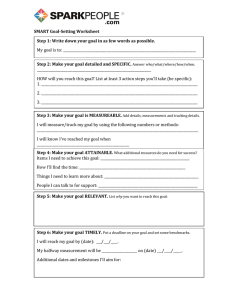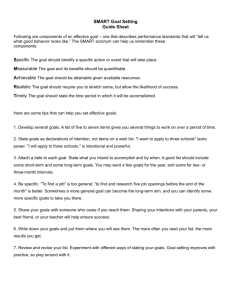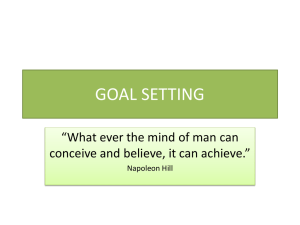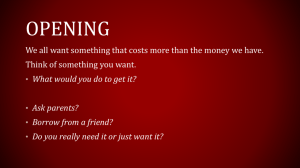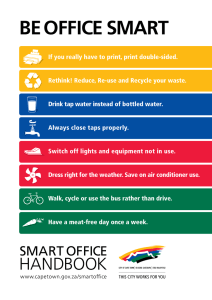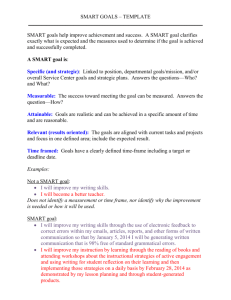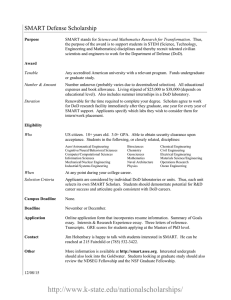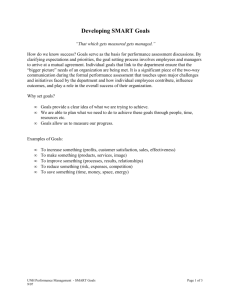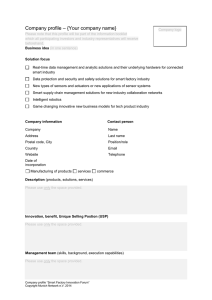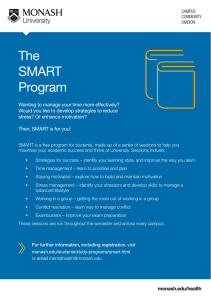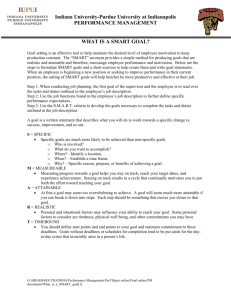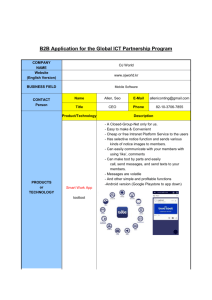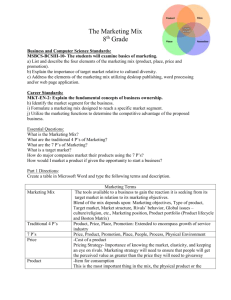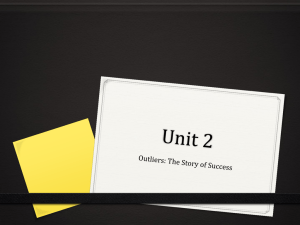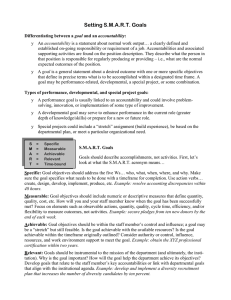SMART Goal Setting
advertisement
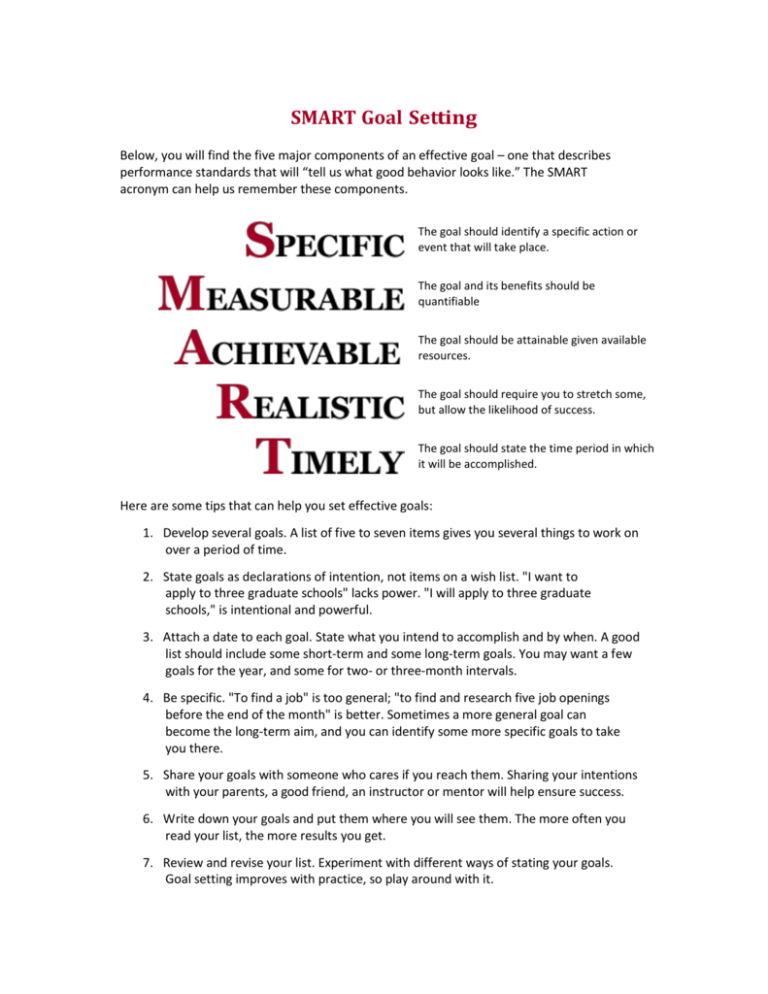
SMART Goal Setting Below, you will find the five major components of an effective goal – one that describes performance standards that will “tell us what good behavior looks like.” The SMART acronym can help us remember these components. The goal should identify a specific action or event that will take place. The goal and its benefits should be quantifiable The goal should be attainable given available resources. The goal should require you to stretch some, but allow the likelihood of success. The goal should state the time period in which it will be accomplished. Here are some tips that can help you set effective goals: 1. Develop several goals. A list of five to seven items gives you several things to work on over a period of time. 2. State goals as declarations of intention, not items on a wish list. "I want to apply to three graduate schools" lacks power. "I will apply to three graduate schools," is intentional and powerful. 3. Attach a date to each goal. State what you intend to accomplish and by when. A good list should include some short-term and some long-term goals. You may want a few goals for the year, and some for two- or three-month intervals. 4. Be specific. "To find a job" is too general; "to find and research five job openings before the end of the month" is better. Sometimes a more general goal can become the long-term aim, and you can identify some more specific goals to take you there. 5. Share your goals with someone who cares if you reach them. Sharing your intentions with your parents, a good friend, an instructor or mentor will help ensure success. 6. Write down your goals and put them where you will see them. The more often you read your list, the more results you get. 7. Review and revise your list. Experiment with different ways of stating your goals. Goal setting improves with practice, so play around with it. Career and Intermediate Goals Worksheet My major job objective or career goal: [[Enter your major job objective or career goal here]] The following intermediate goals are focused on the next months: Education/Training goals: Action steps: 1. 1. 2. 2. 3. 3. Occupational goals: Action steps: 1. 1. 2. 2. 3. 3. Personal health/wellness goals: Action steps: 1. 1. 2. 2. 3. 3. SMART Goals Worksheet (Specific, Measurable, Achievable, Realistic, Timely) Goal Statement: What do I need to do to reach this goal? Where am I now? Obstacles: Solution:
